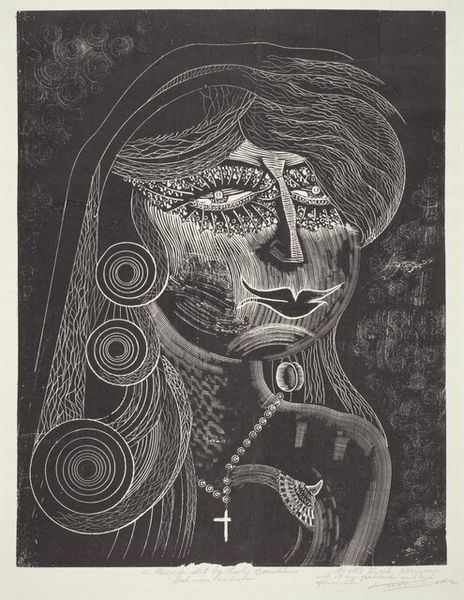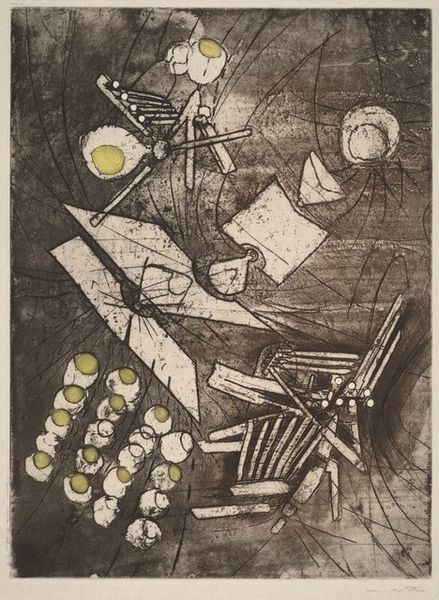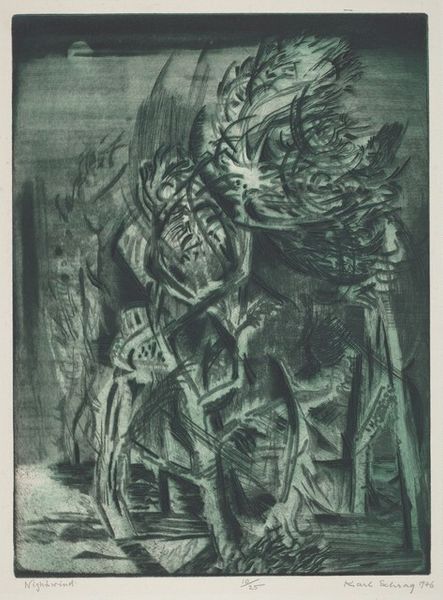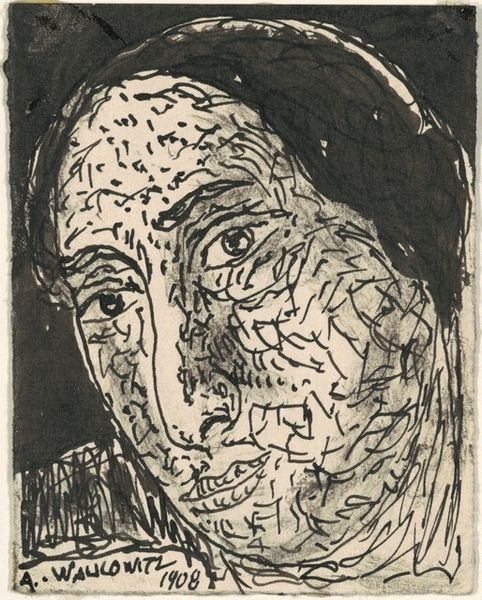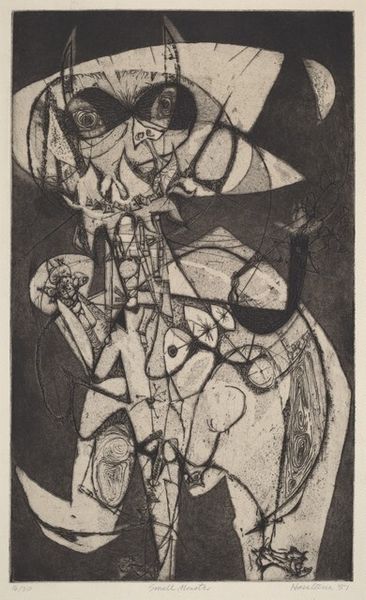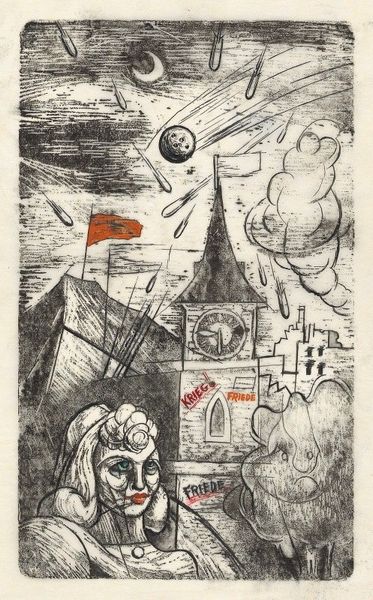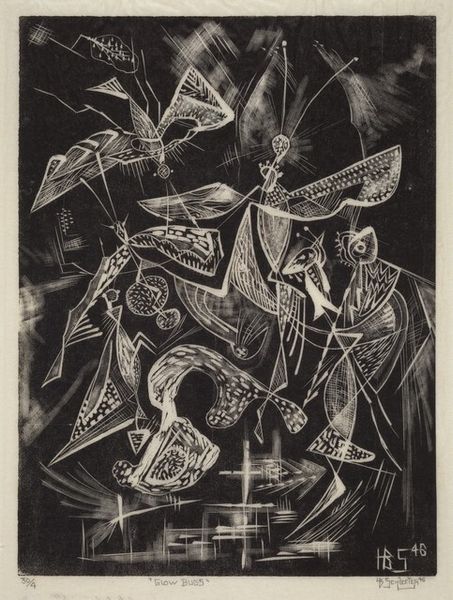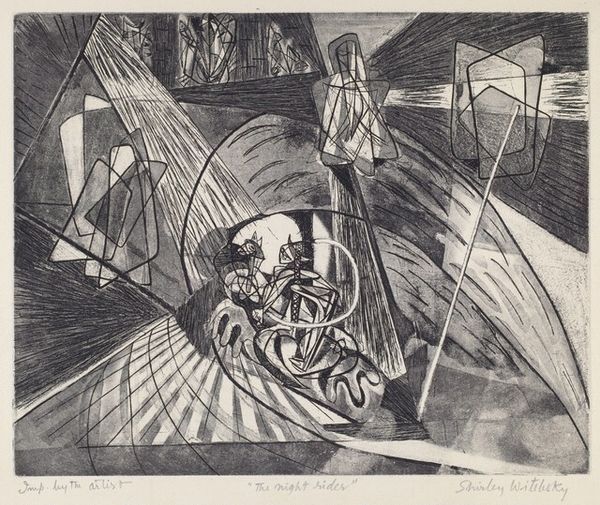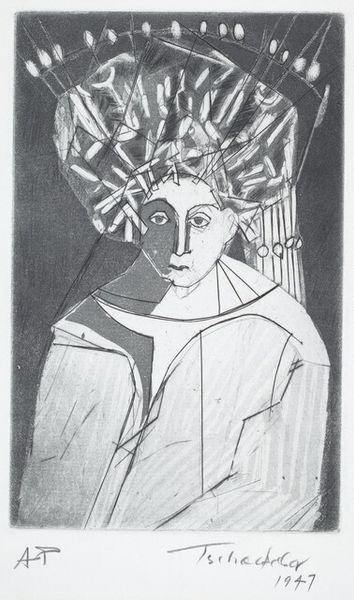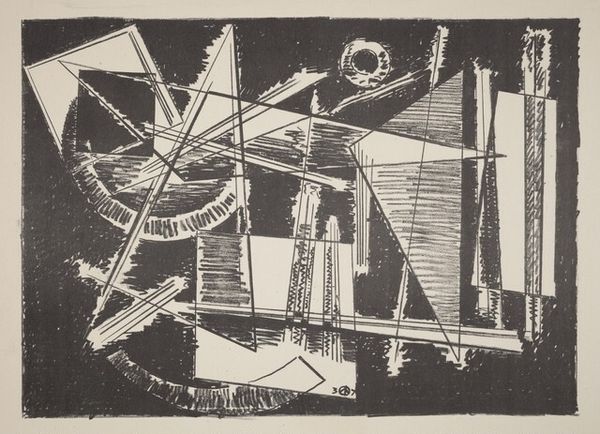
drawing, print, charcoal
#
portrait
#
drawing
# print
#
charcoal drawing
#
figuration
#
form
#
surrealism
#
portrait drawing
#
charcoal
#
surrealism
Copyright: National Gallery of Art: CC0 1.0
Editor: This is "Master of Stars" by Benton Spruance, made in 1959. It appears to be a charcoal drawing or print. I’m immediately struck by how surreal and haunting it feels. What do you see in this piece, especially with those geometric shapes hovering above the figure? Curator: I see a powerful exploration of inner knowledge and perhaps even psychic tension. The geometric shapes, particularly the star-like configuration, are loaded symbols. They resonate with ideas of navigation, both literally – like guiding stars – and metaphorically, guiding one's self. Editor: That's interesting. The idea of navigation resonates, especially considering the figure's almost pained expression. Are you suggesting the stars represent some kind of personal struggle or destiny? Curator: Possibly. Stars throughout history carry so much cultural memory: divine guidance, fate, the unknown future. Consider the Renaissance idea of the "harmony of the spheres," the notion of cosmic order influencing human affairs. Are the geometric shapes a protective enclosure, a cage, or perhaps a lens to perceive beyond the immediate world? Editor: So the star isn't necessarily a positive symbol here. More of a complex, maybe even ambivalent, one? Curator: Precisely. And notice how Spruance uses charcoal to create such stark contrasts. Light and shadow create dramatic tension, which adds to the sense of unease. Even the seemingly simple act of depicting stars takes on layered significance. This image encourages reflection on the profound influence symbols have, both conscious and unconscious, in our lives. What do you think? Editor: I see that now; I had assumed at first the geometric shapes were purely decorative, but there is a sense of history there that connects with how symbols appear again and again in visual culture. Curator: Exactly! And this is what makes art so endlessly fascinating, isn't it?
Comments
No comments
Be the first to comment and join the conversation on the ultimate creative platform.
